Edward Theodore Compton was a German artist whose first visit to the mountains led to them becoming his ultimate inspiration and motivation for painting.
Searching for new alpine scenarios for his drawings, Compton made more than 300 major ascents, among which there are at least 27 first ascents.
More commonly referred as E. T. Compton, he was born in London in 1849, into a family of deeply religious Quakers. His father, Theodore Compton, was an insurance agent who was in love with art, so when his son began to show his talents for drawing, the Compton family was more than happy to support and encourage him. The young Compton had the opportunity to attend various art schools, and among them was the Royal Academy on London. But his education was mainly received in the field, and E.T. Compton was largely self-taught.
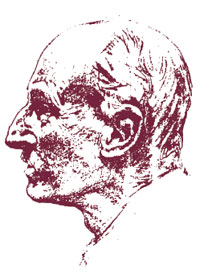
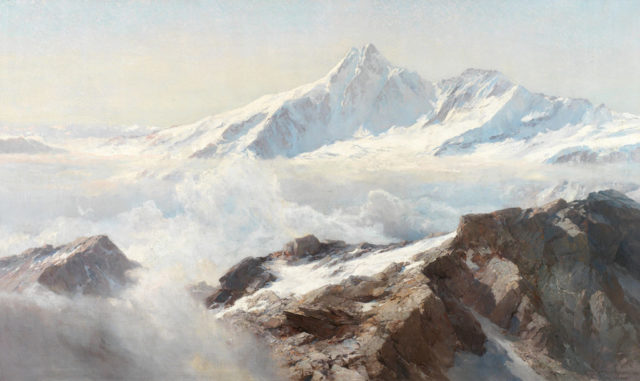
When he was eighteen, his family decided to emigrate to Germany because they wanted the best education for their talented son and in England, it was too expensive a privilege for them. The Compton family settled in Darmstadt which at the time was the seat of the Grand Duchy of Hesse under Grand Duke Ludwig III, and many artists had moved to live there, making for an artistic atmosphere in the city. According to the entries in Edward’s diary, both he and his father were art teachers in the city and Alice, the Princess of Hesse was one of his students.
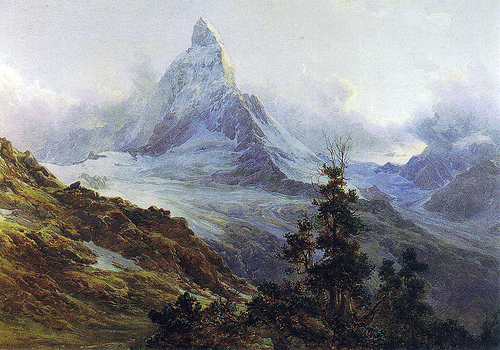
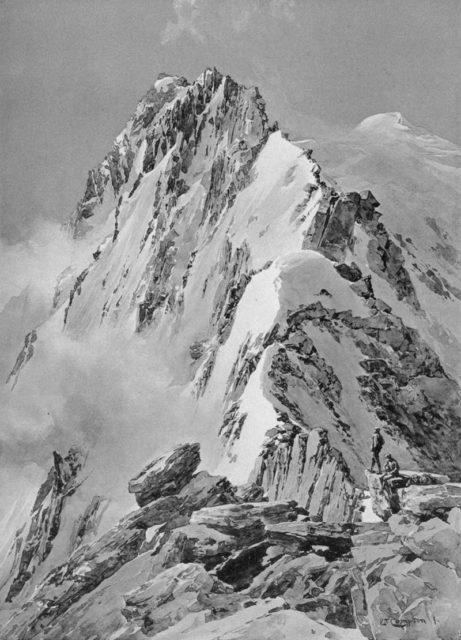
Weissmies North Ridge from the rift behind the first Gratturm (1904)
As soon as the family arrived in Germany in 1897, Compton traveled around the country for almost a year, spending most of his time in Eifel, Mosel, and Rhineland where he made a number of sketches. In July 1868, he went on a trip with all his family to the Bernese Oberland. Edward was so taken by the alpine scenery, especially with the view of the Jungfrau, Mönch, and Eiger peaks that he decided to become a mountain painter.
Compton’s first exhibition was held at the Glass Palace in Munich in 1869.
He was still thirsty for more alpine scenery and traveled the mountains of Germany, Scandinavia, Austria, Corsica, Spain, and North Africa, putting his impressions down in his drawings. He got married in 1872, and together with his wife, Auguste Plotz, traveled through the Tyrol, Carinthia, Italy, and Switzerland.
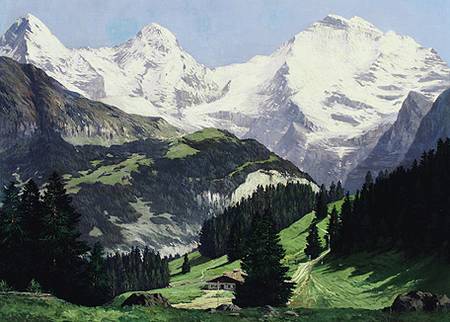
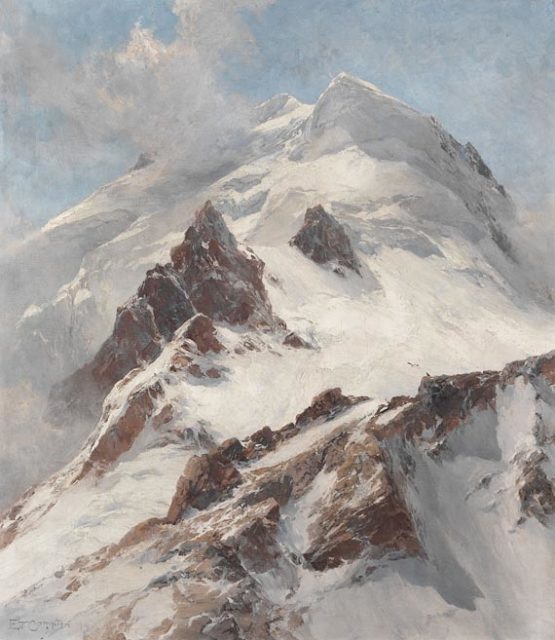
Although most of his work is based on alpine scenes, Compton also drew in other areas such as the Colombian Andes, Northern Cape in Norway, the Lofoten Islands, the Hebrides, the Scottish Highlands, and the High Tatras in Eastern Europe. In 1880, he became a member of the Royal Academy in London.
Around this time, Compton tried his talents as a book illustrator for the German and Austrian Alpine Association (DAV) of which he was a member. In 1889, he illustrated “In the high mountains” by Emil Zsigmondy, “About Fels and Firn” by H. Hess in 1901, and in 1913 Compton illustrated Alfred Steinitzer’s book “Mountaineering in Pictures”. He became a well known and appreciated illustrator in England and his skills were frequently required.
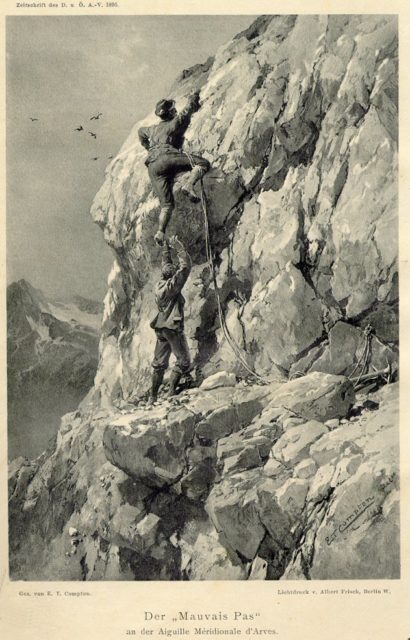
In 1909, Edward made many tours in the Silvretta mountains, accompanied by his friend Karl Blodig, an Austrian optician and mountaineer. During WWI, the Austrian army invited Compton to make paintings from the mountain front but he wasn’t permitted to do so by the Bavarian High Command. At around the same time, the Munich Artists’ Association excluded him because he was English.
Besides being a great painter and illustrator, Edward was an exellent climber. His friend Blodig always praised him for his “brilliant mountaineering skill on ice and rock, his truly admirable perseverance, his inexhaustible patience in bearing hardships”. Along with his membership at DAV, Compton was a member of the exclusive Alpine Club.
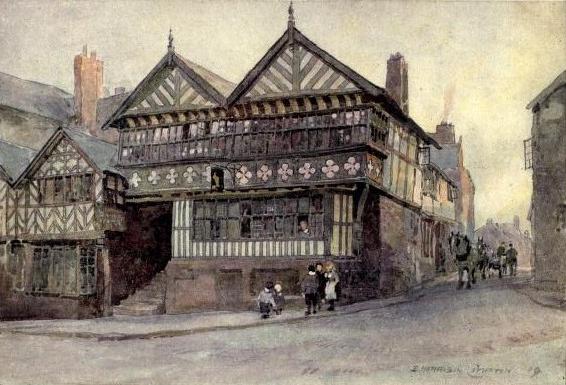
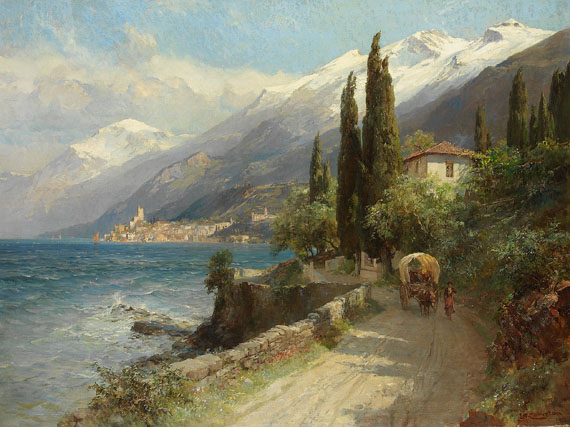
One of his most notable ascents was Cima Brenta where he first climbed in 1882 by the south wall. That same year Compton also climbed Torre di Brenta for the first time. In 1905, he climbed Aiguille Blanche de Peuterey along with his friend Karl Blodig. At the age of 70, Compton climbed Grossglockner.
He died two years later, at the age of 72 in Feldafing where he lived for most of his life with his wife and children. His daughter Dora Compton and son Edward Harrison Compton were also mountain painters, while his daughter Maria was a still life and flower painter.
